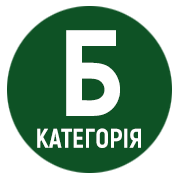STUDY OF THE ROLE OF SUBJECTIVE ORIENTATIONS IN THE PROCESS OF STUDENTS’ CREATIVE THINKING UNDER CONDITIONS OF INFORMATIONAL UNCERTAINTY
DOI:
https://doi.org/10.32782/psy-2024-3-6Keywords:
information, task, strategy, creative thinking, landmark image, constructionAbstract
Attention is focused on the dominant quality of creative thinking – the generation of new ideas. The interpretation of the term divergence in the works of J. Gilford and the concept of divergence developed by scientists in the natural sciences are correlated. Emphasis is placed on the importance of realizing the most fundamental trends in the functioning of any system in order to develop new approaches to the research methodology of creative thinking activity of a person. The interaction of such components of the cognitive system as logical and intuitive is considered, while the concept of randomness has a relative nature. Accordingly, two types of knowledge are analyzed: intuitive and logical. An analysis of strategic thinking processes is carried out, its three main components are singled out: a) reaction to new things; b) an intuitive forecast regarding the prospects of involving this new one in order to solve the problem; c) implementation of the creative toolkit of the individual to build the desired structure in accordance with the given requirements. The scheme of transformation of images created in the process of construction is substantiated: a) task; b) archetype; c) prototype; d) image-project. Individual, personal determinants of strategic thinking are considered. It is shown that solving problems for free construction is a tool for psychological research of the role of subjective landmarks in the process of creative thinking of an individual. The author's methodological tool for studying the functioning of subjective landmarks in the process of creative thinking activity of students in complicated information conditions is presented. The description of three levels of constructive activity of students when solving an experimental problem is presented. It was established that the implementation of complicating information requirements has a positive stimulating effect on the generation of ideas by students regarding the second type of constructive activity. At the same time, the dominant trend is to reduce the number of ideas developed by the researched under the conditions of compliance with additional complicating requirements. The peculiarities of the structural and functional analysis of relevant information by students in the process of transformation of the desired image are determined. The motivational determinants of creative thinking of students have been established. It is shown that a subjective reference point when solving an experimental problem by the researched can become a dominant vector of creative search, ensuring the construction of an original solution.
References
Моляко В.О. Проблема функціонування творчого сприймання за умов надлишку інформації різної модальності і значущості. Актуальні проблеми психології. 2013. Т. ХІІ. Психологія творчості. Вип. 16. С. 7–19.
Функціонування творчого мислення в інформаційно-віртуальному просторі суб’єкта : монографія / В.О. Моляко, Ю.А. Гулько, Н.А. Ваганова та ін. ; за ред. В.О. Моляко. Київ, 2021. 165 с.
Dorfman L. A metaindividual model of creativity. New directions in aesthetics, creativity, and the arts / Eds. P. Locher, C. Martindale, L. Dorfman. New York : Baywood Publishing Co, 2005. P. 105–122.
Dorfman L., Martindale C., Gassimova V., Vartanian O. Creativity and speed of information processing: A double dissociation involving elementary versus inhibitory cognitive tasks. Personality and Individual Differences. 2008. № 44. P. 1382–1390.
Guilford J.P. The nature of human intelligence. New York : McGraw-Hill, 1967.






